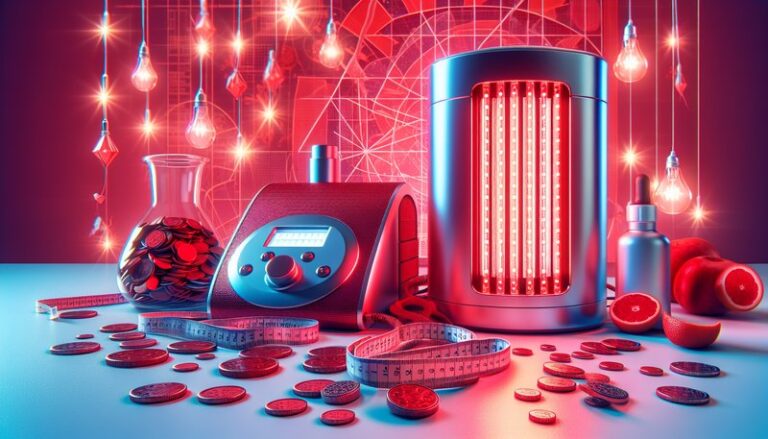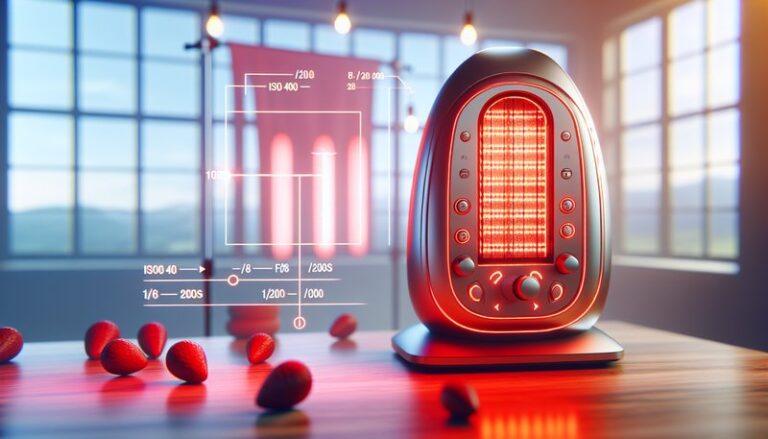Does Red Light Therapy Increase Vitamin D?
Is it possible that the cutting-edge technology of red light therapy can enhance our vitamin D levels, often associated with sunlight exposure?
This article delves into the interaction between red light therapy and vitamin D production in the body. We will explore what red light therapy is, its potential effects on vitamin D levels, the benefits of each, and alternatives to consider.
Key Takeaways
- Red light therapy does not directly produce vitamin D but may enhance overall skin health.
- Traditional sun exposure is still the primary method for vitamin D synthesis in the body.
- Red light therapy can offer various skin benefits that support overall wellness, which may indirectly benefit vitamin D absorption.
What is Red Light Therapy?
Red light therapy (RLT) is a non-invasive treatment that uses low-level wavelengths of red light to stimulate cellular processes in the body. This therapy has gained popularity in recent years due to its potential benefits for skin health, wound healing, and muscle recovery.
RLT works by penetrating the skin and promoting various physiological processes, such as increased circulation, reduced inflammation, and enhanced collagen production. While primarily utilized for cosmetic and therapeutic purposes, it’s essential to understand its relationship with vitamin D, a crucial hormone in maintaining bone health and immune function.
How Does Red Light Therapy Work?
The mechanism behind RLT lies in its ability to influence mitochondrial function within cells. When red light hits the skin, it stimulates mitochondria, leading to the production of adenosine triphosphate (ATP), the energy currency of the cell. This process can enhance cellular repair, boost metabolism, and improve overall skin health.
What are the Benefits of Red Light Therapy?
Red light therapy boasts a wide array of benefits, particularly concerning skin health and recovery processes.
Get informed with Does Red Light Therapy Provide Vitamin D?
Enhancement of Skin Health
RLT has been shown to promote faster healing of wounds and minimize the appearance of scars. By stimulating collagen production and enhancing blood flow, red light therapy can improve the skin’s elasticity and texture.
Reduction of Inflammation
Studies have suggested that RLT may reduce inflammation and alleviate symptoms of painful conditions, such as arthritis. The reduction in inflammatory markers can support overall health and recovery.
Read our take on Cost of red light therapy bed?
Improvement of Mood and Energy Levels
Some research suggests that red light therapy may positively affect mood by increasing energy levels and reducing fatigue. This effect can be beneficial, especially during seasons with limited sunlight exposure, potentially supporting overall well-being.
Enhanced Muscle Recovery
Athletes and fitness enthusiasts may benefit from RLT’s ability to accelerate muscle recovery after intense workouts. Enhanced circulation and reduced soreness can help individuals train more effectively.
Skin Revitalization
For those looking for anti-aging solutions, RLT can stimulate skin rejuvenation, minimizing fine lines and improving complexion.
Is it Possible to Increase Vitamin D with Red Light Therapy?
While the sun is the primary source of vitamin D synthesis in the skin, the question remains whether RLT can supplement this process. Unfortunately, red light therapy does not directly produce vitamin D.
However, RLT may support skin health, potentially preparing the skin for better absorption of vitamin D when exposed to sunlight or supplemented through diet.
What are the Advantages of Red Light Therapy in relation to Vitamin D?
Red light therapy has some distinct advantages:
Supports Skin Health for Better Vitamin Absorption
Healthy skin can enhance the absorption of vitamin D when exposed to sunlight, allowing for optimal vitamin D synthesis.
Improved Mood and Health
By enhancing mood and energy levels in those with limited sun exposure, RLT can indirectly support lifestyle choices that promote overall vitamin D status.
What are the Disadvantages of RLT in Relation to Vitamin D?
While RLT has various benefits, some disadvantages exist:
Limited Direct Impact on Vitamin D Production
RLT does not trigger the same physiological processes that sunlight does for vitamin D production, leaving individuals dependent on dietary sources or sun exposure.
Potential Costs and Accessibility
Accessing red light therapy can be costly and may not be available to everyone, leading to gaps in health support.
What are the Things to Consider Before Using Red Light Therapy?
Before trying red light therapy, consider the following:
Skin Type and Conditions
Different skin types react differently to light therapy. It is essential to consult a professional to ensure RLT is suitable for you.
Existing Medical Conditions
Individuals with certain medical conditions should seek medical advice before undergoing RLT, as specific situations may contraindicate its use.
Treatment Frequency
Determining the appropriate frequency and duration for RLT can be crucial for achieving the intended results. Experimenting without guidance may lead to ineffective outcomes.
What are the Alternatives to Red Light Therapy?
If RLT does not sound ideal for you, consider the following alternatives:
Sunlight Exposure
The most natural method for increasing vitamin D levels is through regular, safe exposure to sunlight, helping the body synthesize vitamin D effectively.
Vitamin D Supplements
Taking vitamin D supplements can be a reliable way to boost levels, especially in those living in regions with limited sunlight.
Dietary Sources
Include foods rich in vitamin D, such as fatty fish, fortified dairy products, and egg yolks, as part of a balanced diet.
Conclusion: Is Red Light Therapy Recommended for Vitamin D?
While red light therapy does not directly increase vitamin D levels, its benefits for skin health and potential support of overall physiology can be valuable. For optimal vitamin D production, traditional sunlight exposure and dietary measures remain the most effective methods.
Frequently Asked Questions
Can I rely on red light therapy for vitamin D levels?
Relying solely on red light therapy for vitamin D levels is not recommended, as it does not produce vitamin D. Sun exposure and diet play crucial roles.
How often should I use red light therapy for skin benefits?
Treatment frequency varies, but many individuals start with sessions two to three times a week. A consultation with a professional is advisable.
Are there any side effects of red light therapy?
Generally, RLT is safe with minimal side effects. However, overuse can lead to skin irritation. Always follow guidelines or consult a professional.
What types of devices are used for red light therapy?
Devices range from handheld units to full-body panels. Ensure you choose a device that is adequately tested and fits your needs.






